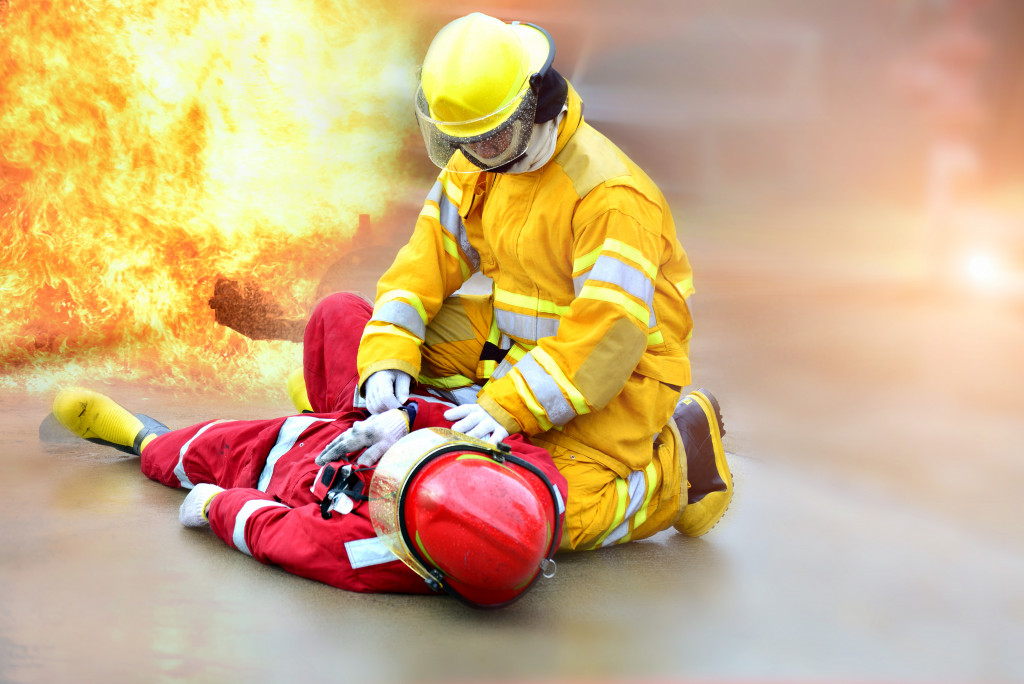When we participate in society like the average person, it can be common to hear about natural calamities and other disasters in certain parts of the world. More often than not, we shrug these events off with the belief that we will never experience them. We read about them on news sites, but we would never think they can happen to us.
Adopting this mentality can be harmful. Nobody can tell when disaster will strike. In 2020, there have been 416 natural disasters that occurred all over the globe. This has resulted in around 8100 casualties. These are figures that account for natural calamities only, and they are already significantly high.
When we become too complacent, we become most vulnerable to them. With that, plenty of institutions have been created to respond to these disasters and make sure that everyone is prepared when they happen. It is often recommended that we run emergency drills to help us prepare for these incidents.
The Emergency Drill
Since there is no way of telling when disasters and calamities will happen, we can only do our best to prepare for them. Of course, many components go into preparing for these events. But one of the best ways to be ready is to run drills for specific emergencies.
There are many emergency drills designed for specific catastrophic events. These drills are practiced occasionally to ensure that everyone knows what to do when the actual disaster occurs. Emergency drills let you know what you should do when these incidents happen. Conversely, it lets you know the things you should avoid doing during the event.
Having adequate emergency response knowledge can potentially save your life and the lives of many more. While many of these drills are built around natural calamities such as earthquakes and storms, many of them are useful for catastrophes caused by humans.
Human Beings: A Ticking Time Bomb
Many incidents resulting in significant casualties are caused by humans or related to human activity. These occurrences can be dangerous as we as a society function by human interaction. People can be directly or indirectly responsible for many casualties.
For instance, the horrific occurrence of mass shootings has always haunted us for years now. In 2021 alone, there have already been 39 fatalities from mass shootings. Historically, these incidents are prominent in schools and churches. If a person frequents church, it might be wise to get active shooter training in the church setting.

Apart from that, building and house fires are incidents that cause great casualties. In 2018, a fire broke out in Grenfell Tower in London. This resulted in 72 deaths. The United States also recorded around 3,000 deaths and over 16,000 injuries related to fires in 2019. These numbers are alarming. And the worst part about them is that they can happen to any residential or commercial structure.
With that, people should take fire drills seriously. Knowing the dos and don’ts during fires can help you avoid injuries and can potentially save your life. We all must make sure to participate in fire drills when we have an opportunity to do so.
Emergency Drills: Perfection Through Demonstration
These figures only highlight the importance of emergency drills for every disaster. These drills help us perfect our response by simulating the event. By letting us witness a glimpse of what might happen during these disasters, we develop a better understanding of how to respond to them.
But of course, simulations do not portray the real danger that we face when these catastrophes happen in real life. These events strike fear and worry in reality. With proper emergency response training and drills, one can overcome their fear and can think with clarity about what to do to survive.
Emergency drills are our ally. For this reason, we should not take them for granted. Just because it is a simulation does not mean we are not learning anything. Again, complacency can eventually be the beginning of our demise. We must never be too lax when participating in emergency drills.
It can also help to conduct these drills regularly. This keeps the information fresh in the minds of participants. Repetition can help them master the precautions needed when responding to a disaster situation.
Of course, emergency drills are only a small part of disaster preparedness. Again there are many components to disaster preparedness. These incidents are virtually out of our control. And the only way to deal with them is to prepare for them as well as we can. Survival can be the result of our preparation and our alertness.




